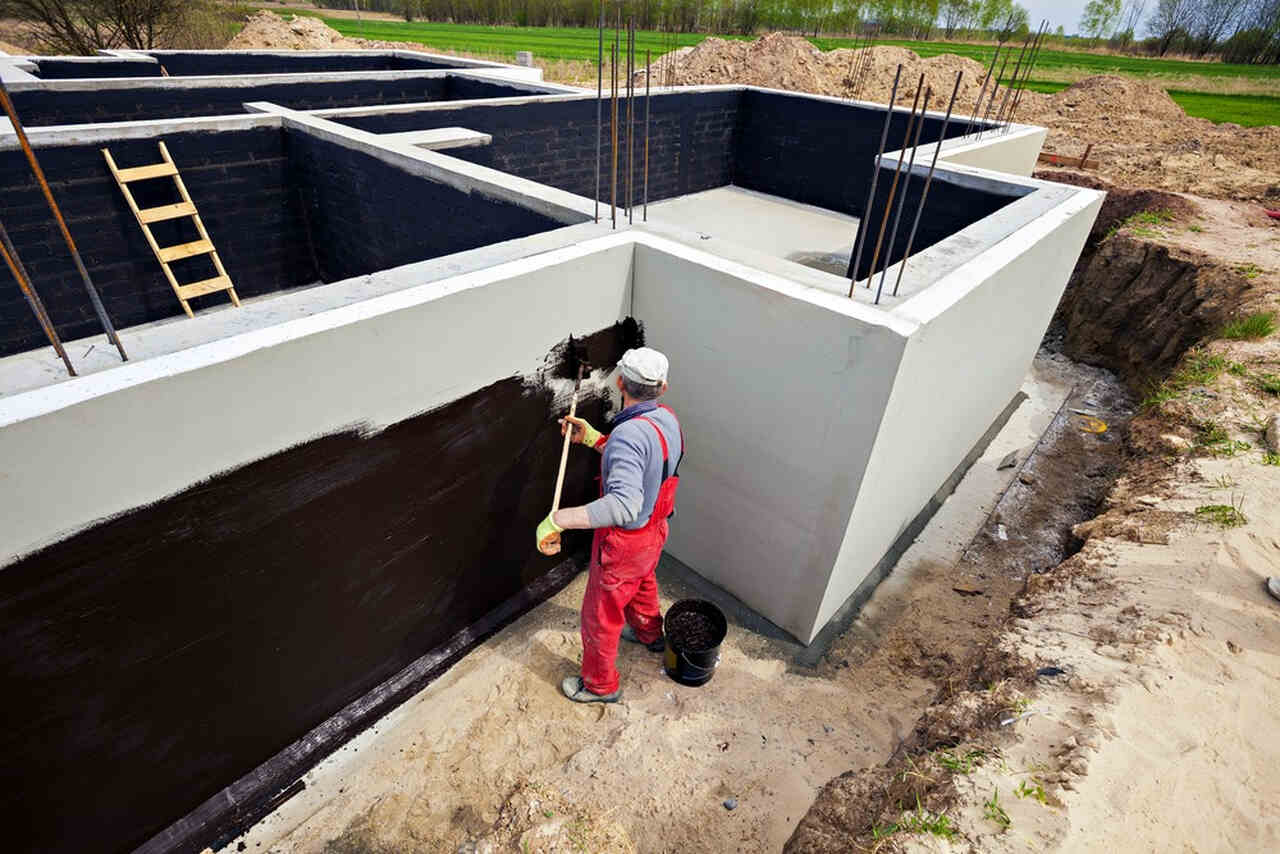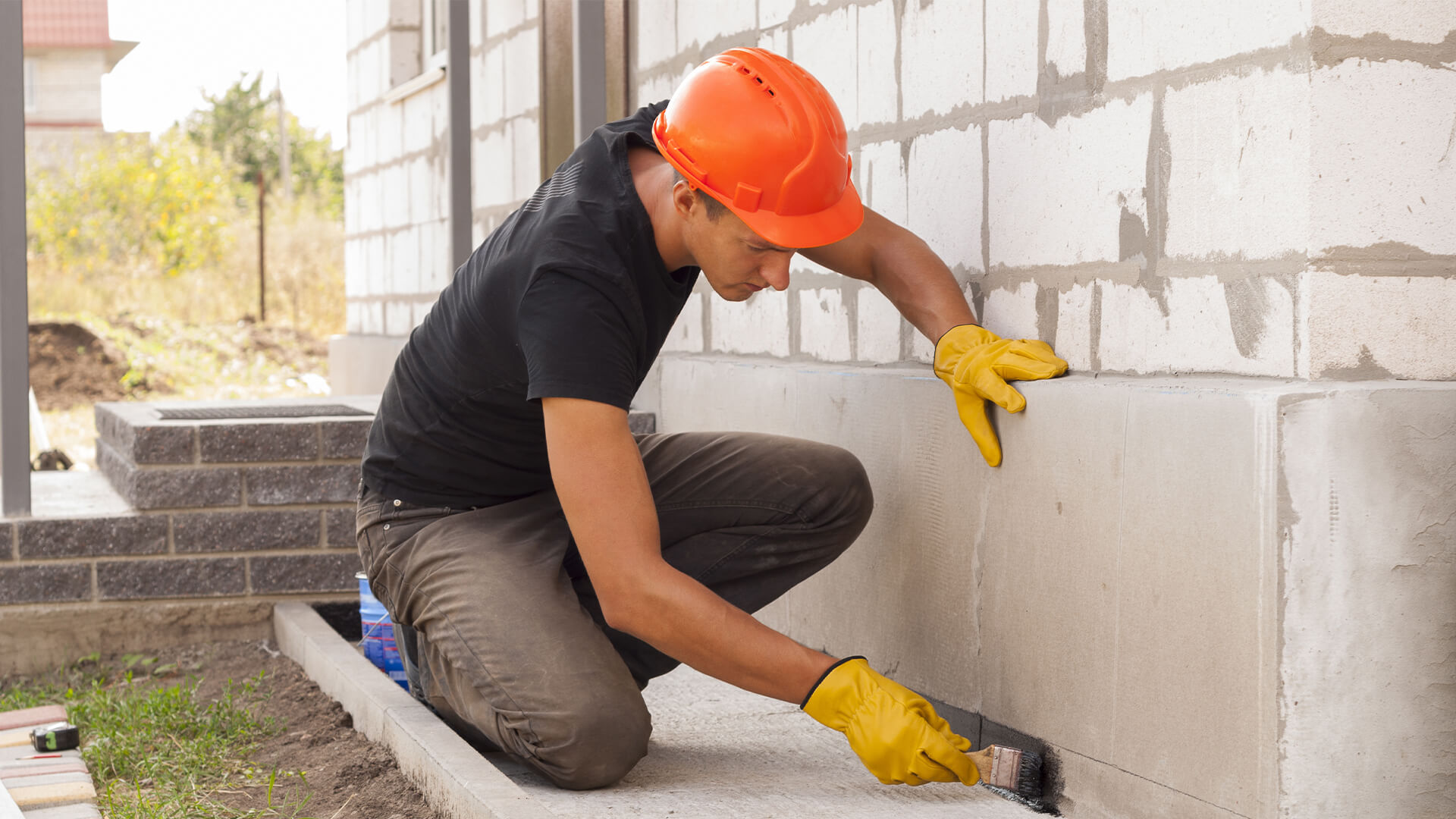Why Waterproofing Is Crucial for Durable Frameworks: an In-Depth Evaluation
Waterproofing plays a vital role in the long life of structures. It works as an obstacle against wetness, which can bring about significant concerns like mold and damage. Comprehending the numerous waterproofing techniques and their effects is crucial for residential property owners. The consequences of ignoring this element can be extreme. Checking out these components reveals not simply the necessity of waterproofing, however also its wider influence on residential property value and security.
Recognizing Waterproofing: Meaning and Value
Waterproofing acts as a vital obstacle against wetness invasion, guarding structures from prospective damages. It incorporates various methods and products made to avoid water penetration into structures, making certain longevity and performance. The value of waterproofing can not be overemphasized, as it shields against a range of issues, including mold development, degeneration of products, and architectural weakening.Effective waterproofing solutions can include membranes, coverings, and sealants, each tailored to particular atmospheres and architectural layouts. By creating a protective layer, these solutions help maintain a dry inside, which is crucial for the health of occupants and the preservation of residential or commercial property value.Moreover, buying waterproofing at the construction phase is considerably more cost-effective than addressing water-related concerns after they emerge. Understanding the concepts of waterproofing is important for designers, builders, and property proprietors aiming for durable, resistant structures that withstand the examination of time and environmental obstacles.

The Impact of Water Damage on Structural Stability
Water damages presents substantial threats to structural integrity, primarily through the growth of mold and mildew. These organisms not only jeopardize indoor air high quality however likewise cause material degradation with time. In addition, prolonged direct exposure to wetness can deteriorate architectural parts, boosting the chance of collapse or failing.
Mold and Mildew Development
Dampness breach postures a substantial danger to the architectural stability of buildings, resulting in the proliferation of mold and mold. These fungis prosper in moist atmospheres, frequently taking root in hidden locations such as wall surface tooth cavities, under flooring, and in ceilings. Their growth not just produces unpleasant stains and undesirable smells however also adds to a decrease in indoor air top quality, posturing health and wellness risks to occupants. Mold and mildew and mildew can compromise products like wood and drywall, leading to more wetness retention and creating a cycle of damages. Early detection and removal are important to avoid extensive development, underscoring the need of efficient waterproofing measures. Resolving moisture concerns quickly can protect both the health and wellness of residents and the long life of the structure.
Architectural Weakening Risks
Unrestrained moisture invasion can lead to serious architectural weakening, endangering the honesty of buildings. Water damages frequently influences foundational elements, such as light beams, columns, and walls, leading to compromised load-bearing capability. Long term exposure to wetness can create materials like wood to rot and steel to wear away, weakening their architectural residential or commercial properties. This damage may result in splits, bowing, or also devastating failings if left unaddressed. Landscape drainage Omaha. Furthermore, water seepage can threaten the dirt below foundations, triggering settling or changing that more exacerbates structural risks. Because of this, carrying out effective waterproofing options is vital in maintaining a structure's architectural integrity, avoiding expensive repair work, and making sure security for owners. Correct upkeep and proactive measures are important in reducing these significant risks associated with water damage
Kinds Of Waterproofing Techniques and Materials
Waterproofing techniques and materials play a vital function in securing structures from water damage. Key techniques consist of membrane waterproofing, which provides a physical obstacle; fluid waterproofing options that develop a smooth layer; and cementitious waterproofing choices known for their longevity and simplicity of application. Recognizing these various techniques is vital for choosing the most suitable method for details building and construction requirements.
Membrane Waterproofing Strategies
Membrane waterproofing techniques are crucial for securing frameworks from the harmful effects of water seepage. These methods entail the application of water resistant membranes that develop a barrier versus moisture. The 2 key kinds of membrane layer systems are sheet membranes and liquid-applied membrane layers. Sheet membranes, typically made from products such as rubberized asphalt or thermoplastic, are erected and can be presented and complied with surfaces. In comparison, liquid-applied membranes are used as a liquid and treatment to form a smooth layer. Both kinds provide adaptability and toughness, satisfying different applications, consisting of roofing systems, cellars, and foundations. Appropriate installment and maintenance of these membrane layers guarantee long-lasting defense, enhancing the life-span and integrity of the structures they guard.
Liquid Waterproofing Solutions
Liquid waterproofing solutions represent a versatile option to conventional membrane systems. These services usually include the application of liquid coverings that treat to form a seamless, long lasting barrier versus water seepage. Different types of liquid waterproofing products are readily available, consisting of polyurethane, asphalt, and acrylic-based formulas. Each type provides unique residential properties, such as versatility, bond, and UV resistance, making them suitable for varied applications. The application procedure commonly includes spraying or rolling the fluid onto surface areas, enabling coverage of intricate shapes and details, which decreases possible powerlessness. Fluid waterproofing options are especially advantageous for locations with motion, such as joints and cracks, as they can suit structural shifts without jeopardizing integrity, ensuring resilient security for frameworks.
Cementitious Waterproofing Options
Many cementitious waterproofing options are readily available, providing reliable options for various building requirements. These systems normally contain a blend of concrete, sand, and additives, making them ideal for both interior and outside applications. Amongst the prominent selections are crystalline waterproofing products, which respond with moisture to develop a water-proof barrier within the concrete matrix. In addition, versatile cementitious coatings supply boosted elasticity, fitting small structural motions without compromising the waterproofing stability. It is additionally common to use cementitious sealers for joints and cracks, guaranteeing thorough security versus water seepage. Overall, cementitious waterproofing choices are valued for their longevity, ease of application, and compatibility with different substratums, making them a recommended choice in modern building techniques.
Long-Term Price Savings Through Efficient Waterproofing
Purchasing reliable waterproofing remedies can greatly decrease long-lasting expenses for structure proprietors and programmers. By protecting against water intrusion, these services reduce damage to structural aspects, minimizing the demand for pricey fixings and upkeep with time. Waterproofing additionally protects interior finishes and furnishings, minimizing replacement prices and boosting the total life-span of the property.Moreover, reliable waterproofing can bring about power cost savings by enhancing insulation and minimizing humidity-related problems. This leads to lower cooling and heating expenditures, adding to a much more sustainable financial model for residential property management.Additionally, the application of waterproofing steps can improve residential or commercial property value by ensuring a completely dry, risk-free, and resilient environment. While the first investment in waterproofing may appear substantial, the lasting monetary benefits much outweigh the ahead of time expenses, making it a sensible decision for anyone included in construction or building administration.

The Duty of Waterproofing in Building Ordinance and Rules
Waterproofing plays a significant role in building ordinance and policies, reflecting its significance in modern construction practices. These codes are designed to guarantee safety, resilience, and sustainability in buildings, emphasizing the demand for reliable waterproofing actions. Numerous national and regional building ordinance outline details needs for waterproofing products and methods, particularly in locations vulnerable to water invasion, such as basements and foundations.Compliance with these Continued regulations not just secures structures from moisture-related damage yet likewise safeguards public health by preventing mold and mildew growth and structural instability. Assessors commonly evaluate waterproofing elements throughout the building procedure to ensure adherence to established criteria. As climate change increases the regularity of extreme climate events, the role of waterproofing in building ordinance is expected to advance, potentially bring about stricter regulations. Generally, the integration of waterproofing in governing frameworks emphasizes its vital duty in accomplishing long-lasting, durable frameworks.
Situation Researches: Successful Waterproofing Solutions
Effective waterproofing solutions have been applied across numerous projects, showcasing ingenious strategies that enhance architectural integrity and durability. One remarkable instance is the remodelling of the historical Smith Tower in Seattle, where advanced membrane systems were used to protect the structure from water invasion. This approach not only protected the structure's visual but likewise expanded its lifespan.In an additional case, a big business structure in Miami utilized crystalline waterproofing innovation, which responds with dampness to create a barrier against water. This service verified reliable versus the city's high humidity and heavy rainfall.Additionally, a bridge in San Francisco undertook an extensive waterproofing treatment utilizing epoxy coatings, which considerably decreased upkeep expenses and enhanced sturdiness. These instance research studies highlight the effectiveness of tailored waterproofing strategies in varied environments, highlighting the value of picking suitable techniques to attend to particular challenges and assure the long life of frameworks.
Best Practices for Implementing Waterproofing Techniques
Applying effective waterproofing techniques calls for cautious preparation and adherence to best techniques - Water Solutions. It is crucial to carry out an extensive website assessment to determine potential locations of water access. This assessment notifies the selection of find out here now suitable products and methods tailored to details environmental problems. Using premium, durable waterproofing membrane layers can significantly boost security against moisture.Additionally, correct installation strategies are necessary; guaranteeing that surfaces are tidy and devoid of impurities promotes excellent bond. Normal maintenance checks need to be arranged to recognize any type of indicators of wear or damage, permitting for timely repairs.Moreover, incorporating drainage systems can successfully manage water overflow, protecting against build-up around frameworks. Educating all workers associated with building concerning waterproofing requirements additional warranties consistency waterproof liquid for roof and adherence to finest methods. Inevitably, a proactive technique to waterproofing can greatly extend the life expectancy of frameworks and reduce long-lasting upkeep prices
Frequently Asked Questions
Exactly How Does Waterproofing Affect Power Performance in Buildings?
Waterproofing significantly improves power performance in structures by preventing moisture intrusion. This decreases the requirement for heating & cooling, keeps regular interior temperatures, and ultimately lowers energy consumption, contributing to long-lasting sustainability and expense savings.
Can Waterproofing Be Applied to Existing Structures?
Waterproofing can undoubtedly be used to existing frameworks. Different techniques, such as membrane layers, finishes, and sealers, make it possible for homeowner to improve protection against moisture, thereby prolonging the structure's honesty and lowering possible damages gradually.
What Are the Indications of Inadequate Waterproofing?
Indications of insufficient waterproofing include water stains on wall surfaces, mold and mildew growth, peeling paint, musty smells, and wetness in cellars - Sump pump discharge drainage Omaha. These signs suggest possible architectural damage and the demand for prompt interest to avoid further damage
Exactly How Frequently Should Waterproofing Be Inspected or Kept?
Waterproofing needs to be examined at least each year, especially in regions with hefty rainfall or fluctuating temperature levels. Regular upkeep guarantees very early detection of concerns, promoting architectural stability and lengthening the life expectancy of the building.
Exist Eco-Friendly Waterproofing Options Available?
Environmentally friendly waterproofing options are progressively available, using sustainable materials such as bio-based polymers and all-natural sealants. These choices not only secure frameworks however additionally lessen ecological effect, appealing to ecologically aware contractors and homeowner.